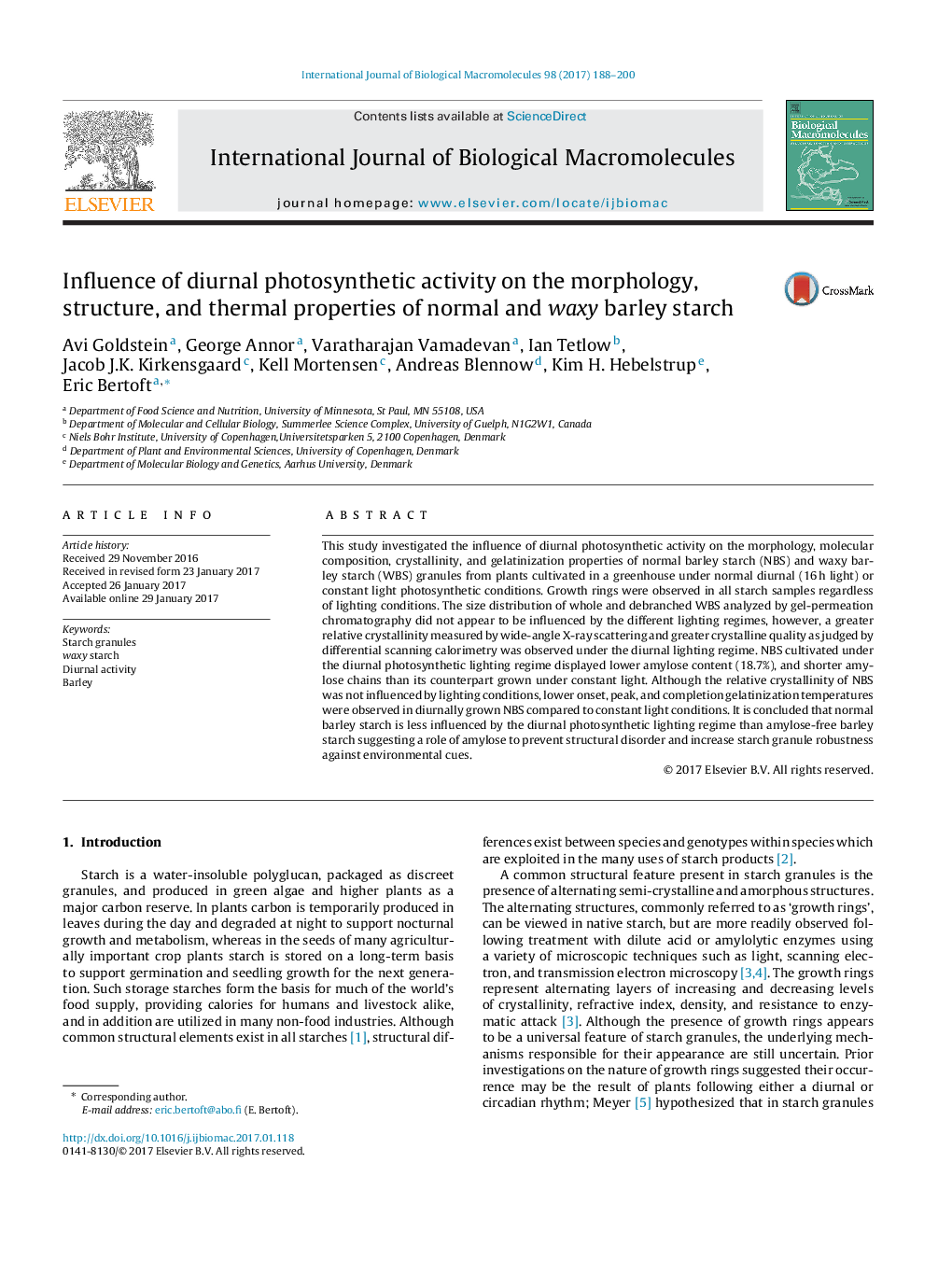| Article ID | Journal | Published Year | Pages | File Type |
|---|---|---|---|---|
| 5512264 | International Journal of Biological Macromolecules | 2017 | 13 Pages |
Abstract
This study investigated the influence of diurnal photosynthetic activity on the morphology, molecular composition, crystallinity, and gelatinization properties of normal barley starch (NBS) and waxy barley starch (WBS) granules from plants cultivated in a greenhouse under normal diurnal (16Â h light) or constant light photosynthetic conditions. Growth rings were observed in all starch samples regardless of lighting conditions. The size distribution of whole and debranched WBS analyzed by gel-permeation chromatography did not appear to be influenced by the different lighting regimes, however, a greater relative crystallinity measured by wide-angle X-ray scattering and greater crystalline quality as judged by differential scanning calorimetry was observed under the diurnal lighting regime. NBS cultivated under the diurnal photosynthetic lighting regime displayed lower amylose content (18.7%), and shorter amylose chains than its counterpart grown under constant light. Although the relative crystallinity of NBS was not influenced by lighting conditions, lower onset, peak, and completion gelatinization temperatures were observed in diurnally grown NBS compared to constant light conditions. It is concluded that normal barley starch is less influenced by the diurnal photosynthetic lighting regime than amylose-free barley starch suggesting a role of amylose to prevent structural disorder and increase starch granule robustness against environmental cues.
Related Topics
Life Sciences
Biochemistry, Genetics and Molecular Biology
Biochemistry
Authors
Avi Goldstein, George Annor, Varatharajan Vamadevan, Ian Tetlow, Jacob J.K. Kirkensgaard, Kell Mortensen, Andreas Blennow, Kim H. Hebelstrup, Eric Bertoft,
